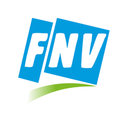
November 2020
Annual Progress Report Metals 2019/2020
Looking back at year 1
The Metals Agreement and its roadmap form the baseline for a clear and concise time lined list of tasks and activities to be undertaken by the parties. In the first implementation year, the parties made considerable progress to validate their commitment to the Metals Agreement.
Roadmap: what has (not) been done?
The roadmap for implementing the Metals Agreement sets out actions with timelines to be undertaken by the parties, and some, specifically by companies. The ‘Roadmap for implementing the IRBC Agreement for the Metals Sector | State of affairs year 1’ shows the progress made in the first year.
For individual company due diligence, as planned, a toolbox containing a number of tools and templates has been launched to enable the companies to start their due diligence journey. Examples are the ‘Maturity Assessment Tool’, ‘Maturity Improvement Plan Template’ and the ‘List of Due Diligence Information Template’. A number of activities have been postponed due to COVID-19. The companies will start performing a risk assessment, deliver a heat map and will identify hotspots and challenges around understanding the chain of custody in year 2 instead of year 1 as originally planned.
The aspiration of the Metals Agreement is to bring focus to the risks in the secondary materials supply chains, this is still a work in progress. A plan has been developed around this theme and it is the ambition of the Metals Agreement to have more metal recyclers and collectors on board.
The focus areas under collective actions and increasing leverage are; communication, upscaling, collective projects, and collaboration with other International RBC Agreements. So far, all the companies have made their individual participation and information about the Metals Agreement public on their websites.
Links to statement of the companies on their participation in the Metals Agreement:
A list of companies active in the metals sector has been developed for outreach upscaling purposes. No new parties signed the Metals Agreement in the first year, although a few companies have expressed their interest to join in the second year. It is agreed that the Metals Agreement’s goal to have twenty companies as signatories in the first year was quite ambitious, made even more daring in the present COVID-19 crisis. A communication and outreach strategy for potential new parties has also been developed.
Zwanny Naber, Union official FNV Metal
“The most important progress of the Metals Agreement is the recognition by all the parties, that the implementation of international responsible business conduct is demanding. It is not an activity that can be relegated to the sidelines. It requires a fundamental approach by companies, and it should be “business as usual”. In year two, all signatory parties must work together on achieving the first steps towards responsible metals supply chains. This ultimately, is the goal of the Metals Agreement.
Our organisation understands the importance of the Metals Agreement, and is prepared to assist the companies where needed, to join in creating awareness about its objectives and its principles, and to offer training and guidance for the activities to come.”

Andrew Green, Executive Director, International Zinc Association (IZA)
“The International Zinc Association considers the Metals Agreement a unique platform for the global zinc industry to exchange practical experiences and expectations with civil society organizations, unions, NGOs, and the Dutch government. Constructive consultations and insight in the Metals Agreement’s tools have already provided important input on our journey to increased responsibility in the zinc value chain. We share the Metals Agreement’s vision that creating partnerships among stakeholders will accelerate progress towards achieving United Nations Sustainable Development Goals and we look forward to supporting the Metals Agreement and its members in 2021.”
